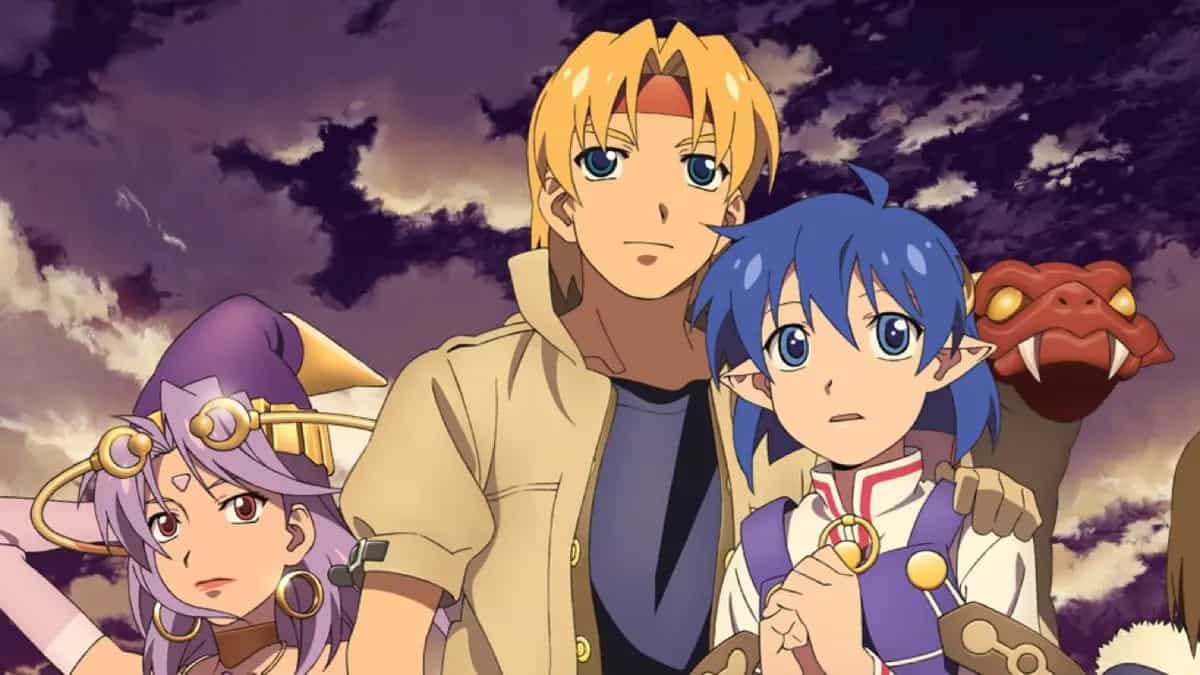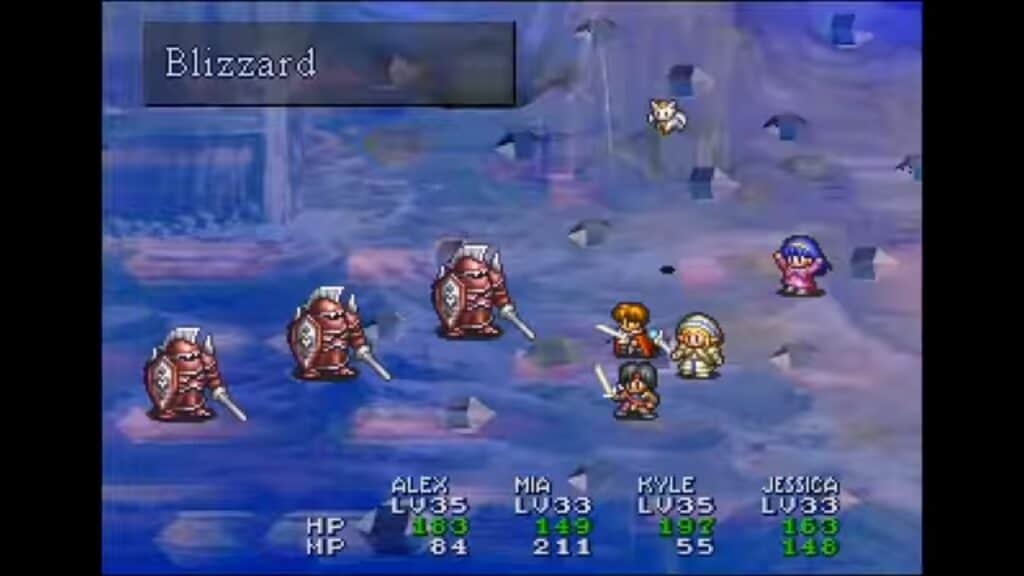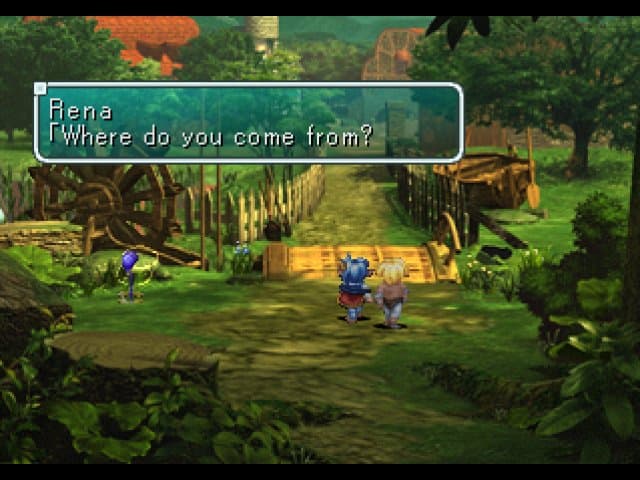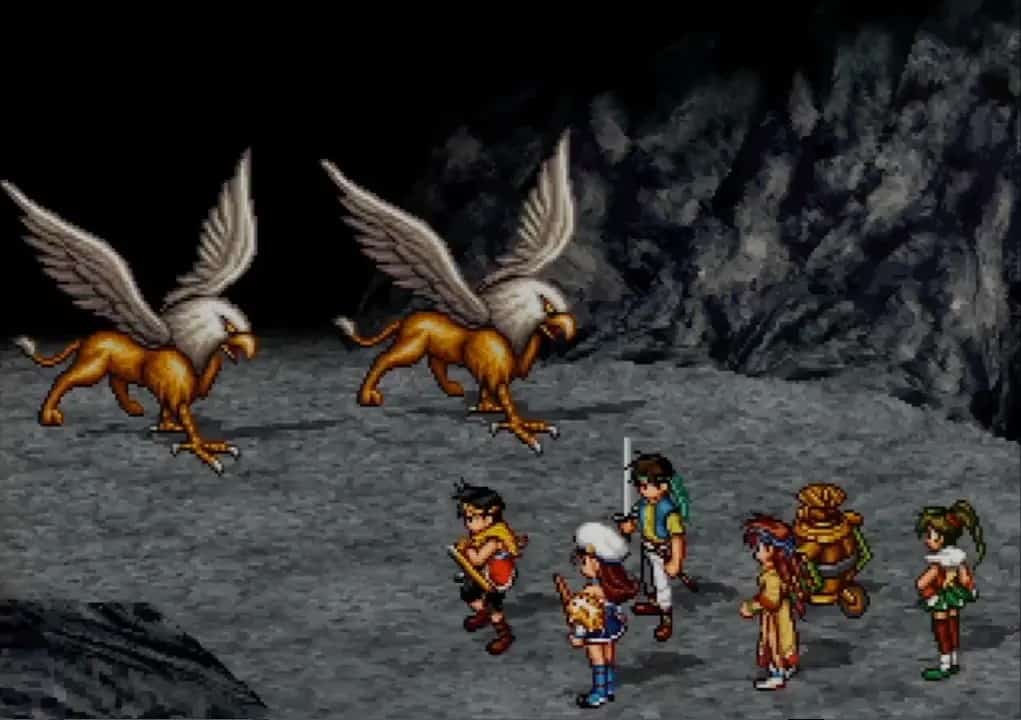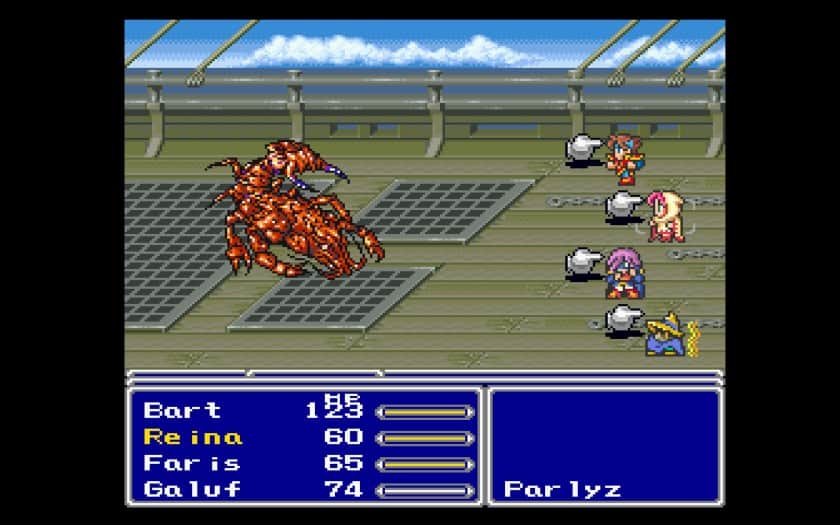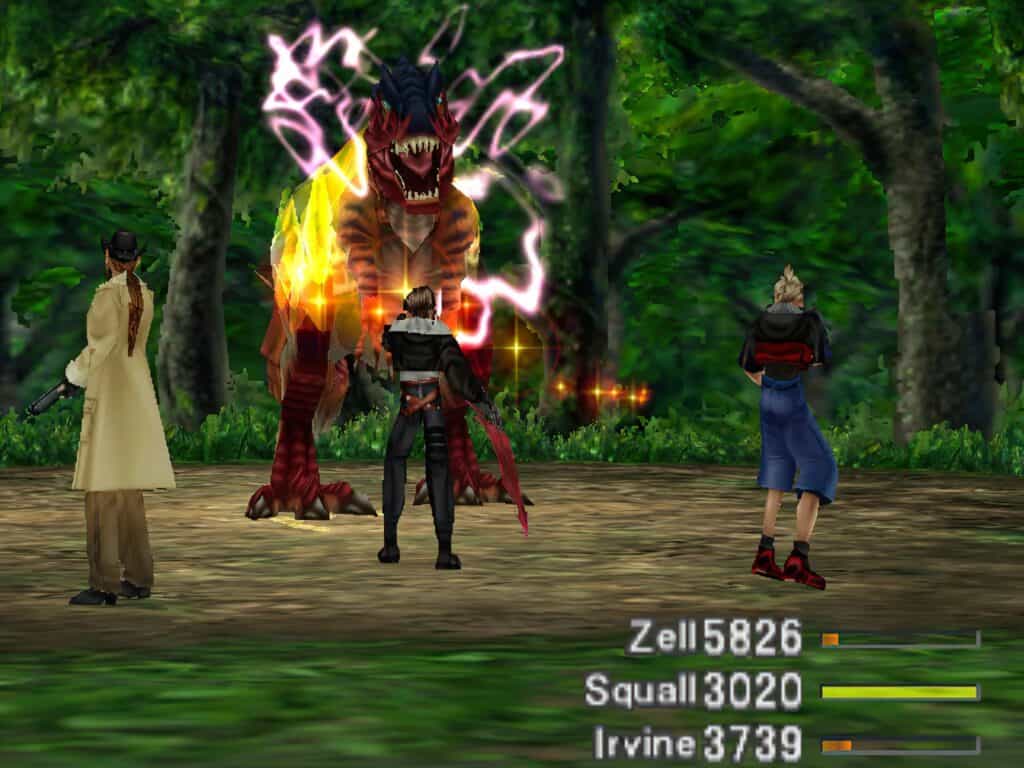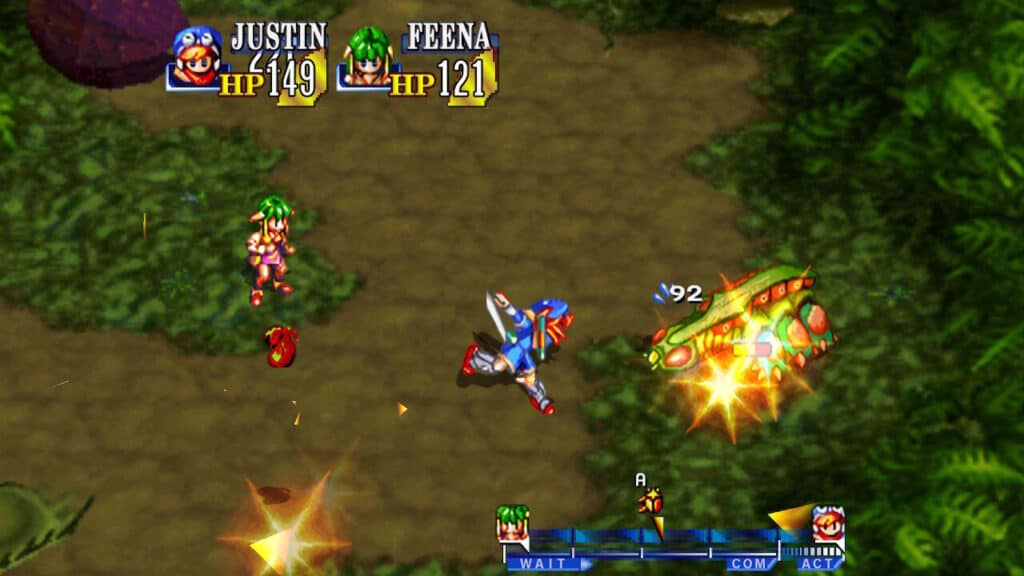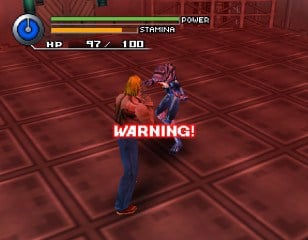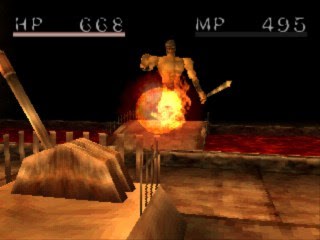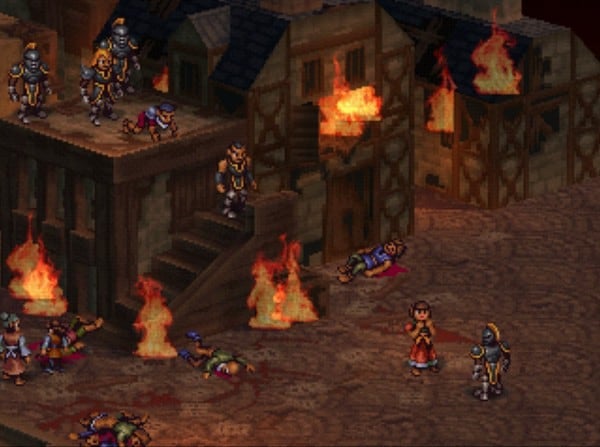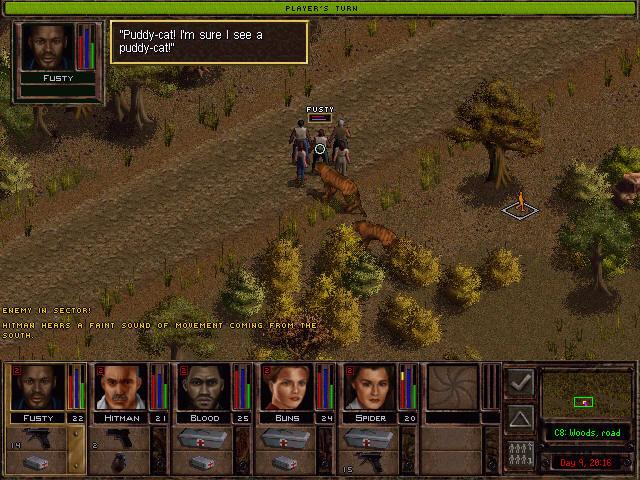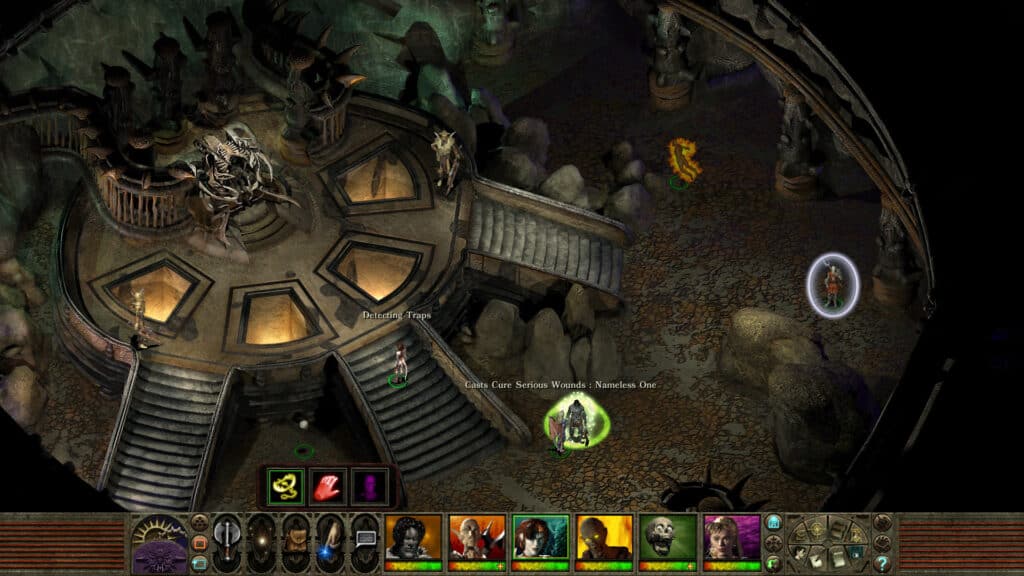Though the two years preceeding it might slightly have the edge in terms of timeless games in the genre, the RPGs from 1999 are nothing to scoff at. By the end of the 20th century, the PlayStation was emerging as the clear winner of the 5th generation console wars, and the move from cartridges to CD-ROMs meant that games could tell bigger and better stories by nearly every metric. RPGs would end up being one of the primary genres to display the medium’s growth and maturity early on, utilizing the newly extended storage capabilities of the CD format to include full-motion video cutscenes with either pre-rendered 3D graphics or featuring short animated segments. As a result of this deft blending of gameplay and story, RPGs were in the full swing of a second golden age by 1999.
1997 would end up having its clear standout be Final Fantasy VII (and, shortly thereafter, Final Fantasy Tactics) and 1998 would see the arrival of Xenogears, but the Final Fantasy franchise was by no means ready to take the year off as 1999 rolled around. One of the earliest releases of the year is Final Fantasy VIII, whose arrival in February 1999 would set a high bar for other games in the genre to clear. RPG highlights of the year wouldn’t only stick to consoles, though, as the PC would end up getting two games in 1999 that still stand as some fan-favorites in the genre. Further, both these titles end up showcasing just how inventive Western RPG developers were and still are, paving the way for the next wave of groundbreaking franchises that would come to define the 6th and 7th console generations.
Lunar: Silver Star Story Complete
Originally releasing on the Sega CD as Lunar: Silver Star, Lunar: Silver Star Story is a remaster of Game Arts’ classic JRPG. The Japanese version of Silver Star Story would grace PlayStation screens in the East in 1998, with the North American localization arriving exactly a year later in May 1999. Like the original, Silver Star Story Complete is a 2D JRPG that features pixel art sprites for the character and enemy models, has players traverse a large map with towns and dungeons dotting the landscape, and includes a traditional turn-based combat system. The primary difference between the original Lunar and Silver Star Story Complete is the use of a greater color palette, additions to the character roster, and inclusion of full-motion anime cutscenes, all of which are possible thanks to the Sega Saturn and Sony PlayStation’s more powerful hardware.
What makes Lunar a fan-favorite to this day is its charming story and likeable cast of characters, which the anime cutscenes from the PlayStation remaster do a great job of reinforcing. The gameplay is fairly simplistic by JRPG standards and will feel right at home to anyone who grew up playing the genre’s highlights on the SNES, but anyone that has nostalgia for that era deserves to play Lunar at least once. Simply put, Lunar: Silver Star Story Complete is JRPG “comfort food”, and its place as the third-best selling RPG of 1999 (behind Final Fantasy VIII and Planescape: Torment) only serves to cement its place as a must-play from the year.
Star Ocean: The Second Story
The first Star Ocean game is an incredible title in its own right, but its sequel Star Ocean: The Second Story is bigger and better in every way. An offshoot from the Tales franchise (with the core team at Tri-Ace founding the studio following their work on the first Tales game), Star Ocean‘s mix of classic JRPG leveling and character progression with real-time combat is a potent combination, and one that wasn’t very common back in 1999. Getting to choose between the two protagonists and recruit an entirely unique group of supporting characters in the adventuring party gives incentive for multiple playthroughs, and the pathways that open up for players to experiment with character builds and Talents create plenty of opportunity for strategy in battle that extends beyond button-mashing hack n’ slash gameplay.
A large part of what makes Star Ocean: The Second Story so memorable are its excellent cast of characters and unique sci-fi fantasy plot, with both Claude and Rena being noteworthy and relatable protagonists in their own right. It makes perfect sense that Square Enix would want to remake the game, and Star Ocean: The Second Story R is practically essential for any JRPG fan. The original PS1 version still has its charm and its beautiful 2D visuals still hold up well, but the remake takes everything great about the original and expands on it (while also adding in full-3D environments) to make it the definitive version of an all-time classic. Not to mention, the remake is much easier to come by than an original physical PS1 disc.
Suikoden II
Just like Star Ocean: The Second Story, Suikoden II would be yet another JRPG sequel releasing in 1999 that outdoes its predecessor in nearly every way. The main draw of the Suikoden series has always been its more personal story that follows the game’s protagonist as they grow from a young warrior into the leader of an entire nation, as well as all the conflicts and relationships they form along the way. Where Suikoden II truly shines is in its absolutely massive cast of supporting characters, with the player able to recruit 108 different party members to join them in battle. And battle they must, as Suikoden II offers up some classic turn-based action that fans of the genre should be more than familiar with at this point.
Suikoden II isn’t necessarily a difficult game or an overly long one, but its place as the highlight of the now-dormant Suikoden franchise makes it a must-play for fans of JRPGs. The story and characters are front and center in Suikoden games, and Suikoden II is no different, with the focus primarily on the excellent sweeping tale it tells rather than its somewhat by-the-numbers JRPG gameplay. The title is extremely hard to come by in physical format thanks to a limited print run on the PlayStation, but thankfully the game is available on Steam as part of a remaster package that includes it and the original Suikoden.
Final Fantasy Anthology
Thanks to the time necessary for localization back during the 16-bit era, Square would opt to pass on bringing Final Fantasy V over to the SNES in favor of allocating resources toward Final Fantasy VI‘s Western release. After years of the title being a Japanese exclusive, Square would end up bringing both Final Fantasy V and Final Fantasy VI to the PlayStation as part of the Final Fantasy Anthology compilation. Square actually has three different Final Fantasy collections that the company released on the PlayStation, but Final Fantasy Anthology‘s inclusion of Final Fantasy V in its first official Western release makes it the clear standout. Unforuntately, the port itself (handled by the third-party studio TOSE) pales in comparison to later versions of the game that would arrive shortly thereafter.
Still, Final Fantasy Anthology is an important time capsule for the PlayStation, the Final Fantasy franchise, and for Square Enix’s history as a company. Both Final Fantasy V and Final Fantasy VI are incredible games and two of the standout mainline entries in the franchise, so having them both together on one disc ended up being something like a dream come true. Both titles are still absolutely worth playing (especially Final Fantasy VI, which might be the best game in the entire series), but the Pixel Remaster versions available on modern consoles and PC are far superior to the TOSE ports included in the PS1 release of Final Fantasy Anthology.
Final Fantasy VIII
Right out of the gate, Final Fantasy VIII makes it very clear how the series improves following the release of Final Fantasy VII. In just a few short years, the Final Fantasy team at Square was able to squeeze so much more out of the PlayStation hardware to create what still stands as one of the best-looking games on the console, making the blocky and cartoonish low-poly character models of Final Fantasy VII seem downright primitive by comparison. Visuals aren’t the only thing that Final Fantasy VIII overhauls, though, as it also happens to feature some of the most mechanically deep and satisfying character progression and combat systems in the franchise. Players would initially be turned off by Final Fantasy VIII‘s complexity following Final Fantasy VII‘s more approachable gameplay, but years later it stands as a cult-classic and fan-favorite for that same reason.
There have been so many versions of Final Fantasy VIII that it can be hard to narrow down which one is worth playing in today’s day and age, but the short answer is that the recent remaster offers everything that a newcomer needs to get acclimated. Between the helpful “Boost” features (which offer gameplay tweaks such as “always on” Limit Breaks and infinite HP in battles) and the HD textures applied to the visuals, the remaster of Final Fantasy VIII is both a great starting point for those who have never experienced this excellent game and the easiest version of the title to come by. That said, there’s something special about the charm of the original PS1 release, and its visuals somehow look better than the remaster when playing on the right kind of display.
Grandia
Though it would initially release on the Sega Saturn in 1997, the version of Grandia that most longtime RPG fans remember is the 1999 PlayStation version. This charming JRPG features a compelling story taking place in a world just entering an age of exploration, and players get to control the young adventurer Justin as he begins a quest to uncover the mystery of a lost civilization. Similar to other JRPGs on the PlayStation and Saturn, Grandia utilizes 2D character sprites over 3D backgrounds, switching to a semi-overhead perspective during battles that take place in pre-rendered environments. At its core, Grandia is yet another excellent JRPG of the era that sticks to the core elements of the genre (turn-based combat, traversing an overworld map, gaining experience and leveling-up party members) but executes everything it does so well that its familiarity doesn’t work against it.
The original 32-bit releases of Grandia are seen by many as the superior version of the title thanks to the HD Remaster‘s different visual style, but there’s no denying that the Grandia HD Remaster is much easier to come by than the PS1 disc. Further, the ability to get both Grandia and its excellent sequel Grandia II in one remastered package is a no-brainer for anyone who is a fan of JRPGs, especially considering that Grandia II‘s release as a Dreamcast exclusive meant it went criminally underappreciated. Both Grandia games are excellent titles that embody the timeless qualities of the best 16-bit RPGs but present them in a 32-bit package.
Hybrid Heaven
Although it would receive some mixed reviews at the time of its release, Hybrid Heaven now stands as one of the hidden gem cult-classics from the Nintendo 64 library. This interesting genre experiment from Konami blends real-time action gameplay with RPG mechanics and character progression. Players assume the role of a human-alien hybrid who is actively working against his creators to prevent an alien invasion of earth. Hybrid Heaven‘s combat system is both its unique highlight and the area where its RPG mechanics shine through the most, with players able to target individual body parts to use in battle and level them up. So, for instance, if a player blocks with their right arm, the right arm gains stat points in defense.
Hybrid Heaven earns some points for being a game that takes risks, and its emphasis on story and combat make it one of the more interesting titles on the Nintendo 64 (as well as one of its few RPGs). Playing the game now would require either tracking down a copy of the original N64 cartridge or using an emulator, but its combat and unique spin on the action-RPG subgenre help it stand out among the rest of the year’s highlights.
Shadow Tower
Similar to Hybrid Heaven, Shadow Tower is a PS1 RPG that would end up finding a cult audience thanks to its unique gameplay and captivating atmosphere. Shadow Tower is actually a FromSoftware title and shares a lot in common with the developer’s King’s Field series, and both franchises would end up serving as major inspirations for the groundbreaking Dark Souls series. Players explore the world of Shadow Tower using a first-person perspective just like in the King’s Field games, but it differs from most other RPGs in that players don’t earn experience to level up. Instead, players earn stat points from defeating creatures throughout the titular tower and can choose which stats to allocate the points toward.
However, as is the case for most FromSoftware games of the era (and even now, to some extend), Shadow Tower‘s obtuse mechanics and unconventional gameplay would lead to the game getting mostly negative reviews and selling few copies. That said, most who remember Shadow Tower do so fondly. Thanks to the way that both Shadow Tower and King’s Field lay the foundations for the future of FromSoftware’s library, it’s not surprising to see how this first-person dungeon crawler ends up being a PS1 hidden gem and cult-classic.
Vandal Hearts II
Both Vandal Hearts and its excellent sequel, 1999’s Vandal Hearts II, are criminally overlooked tactical-RPGs from the PS1. What sets the series apart is its focus on utilizing weapons and armor to influence character classes, which Vandal Hearts II takes to new heights with nearly 150 different combinations for players to try. With no penalty for switching classes and encouraging experimentation, Vandal Hearts II offers much more freedom and customization than other tactical-RPGs of its time. Additionally, the character sprites and environments in Vandal Hearts II stand out as a massive improvement over the first game in the series, and the inclusion of more nuanced animations for every action (including some gruesome character deaths) adds to the immersion.
Vandal Hearts II makes some interesting changes over its more critically and commercially successful predecessor, but by no means are those changes a net negative. It’s story isn’t especially memorable and the new multi-turn battle system can take some getting used to, but Vandal Hearts II is another title in the pantheon of excellent TRPG/SRPG titles on the PS1.
Jagged Alliance 2
At the same time that Japanese developers were releasing one incredible RPG after another on the PlayStation, Western developers were starting to churn out a series of now-legendary RPGs on the growing PC landscape. Among these is Jagged Alliance 2, which for many is still the greatest tactical RPG. In Jagged Alliance 2, players take on the role of a group of mercenaries fighting to free a small nation from the grips of an authoritarian dictator, and the game treats its setting with the same kind of humor and action-heavy attitude of some of the best movies from the 1980s. More than its great writing and humor, though, Jagged Alliance 2 offers one of the most addictive gameplay loops through allowing players to fight turn-based tactical battles, earn cash, improve their squad’s loadouts, and do it all over again.
The addictive loop of being a soldier of fortune is hard to pass up, and that Jagged Alliance 2 wouldn’t receive a sequel until almost 25 years later speaks to the enduring popularity of the game. In fact, looking at the response to Jagged Alliance 3 (which continues to grow in popularity thanks to strong critical reception) shows that fans’ love for Jagged Alliance 2 is just as strong now as it was in 1999. A timeless PC classic that fans of turn-based tactics games and strategic RPGs should not miss.
Planescape: Torment
Baldur’s Gate‘s release in 1998 might cement it as the first truly groundbreaking CRPG, but Planescape: Torment is arguable the title that perfected the narrative and atmosphere of a good Dungeons & Dragons game. As The Nameless One, players travel through the Planescape setting from the world of Dungeons & Dragons and interact with characters to unravel the mystery of their past lives and purpose as an immortal. Planescape would end up being one of the first games from Black Isle Studios (along with Fallout 2) and its incredible narrative and writing would later be trademarks of the studio’s successor, Obsidian Entertainment.
Perhaps the highlight of Planescape: Torment (and the feature that would end up influencing countless other RPGs) is its morality slider adhering to the axis from Dungeons & Dragons. Depending on the player’s actions and choices in conversations with NPCs, the Nameless One will begin to shift from his starting place of “True Neutral” to anywhere along the spectrum from “Lawful Good” to “Chaotic Evil”. With its excellent and beleivable characters, compelling narrative, emphasis on choice and consequence, and engaging D&D gameplay, it’s no wonder that Planescape: Torment continues to land on “best of” lists chronicling the greatest RPGs ever made.
The image featured at the top of this post is ©Star Ocean official artwork.
